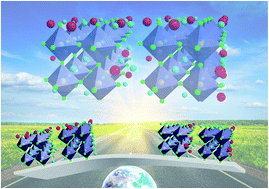Surface & grain boundary co-passivation by fluorocarbon based bifunctional molecules for perovskite solar cells with efficiency over 21%†
Abstract
Low-temperature processing in perovskite films always results in the formation of submicrometer scale grains and consequent abundant defects that lead to carrier recombination, hysteresis and moisture degradation. Passivation of defects at either surface or grain boundaries (GBs) thus promises great advances for developing high performance perovskite solar cells (PSCs). By taking the co-passivation agent of 1H,1H-perfluorooctylamine (PFA) as the example, we present in this work a simple and effective surface & GB co-passivation strategy based on bifunctional molecules with fluorocarbon chains to achieve PSCs with highly improved photo-conversion efficiency (PCE) and stability. It was demonstrated that such a co-passivation strategy leads to 53.3% PCE enhancement in the MAPbI3 type PSCs, as well as a champion PCE of 21.31% in CsFAMA type PSCs, and remarkable stability with 3% PCE loss after 2500 h of storage at a humidity of 70 ± 5% at room temperature. Our results thus show the great potential of surface & GB co-passivation by fluorocarbon based molecules for accessing high performance PSCs based on the protocols of defect manipulation.



 Please wait while we load your content...
Please wait while we load your content...